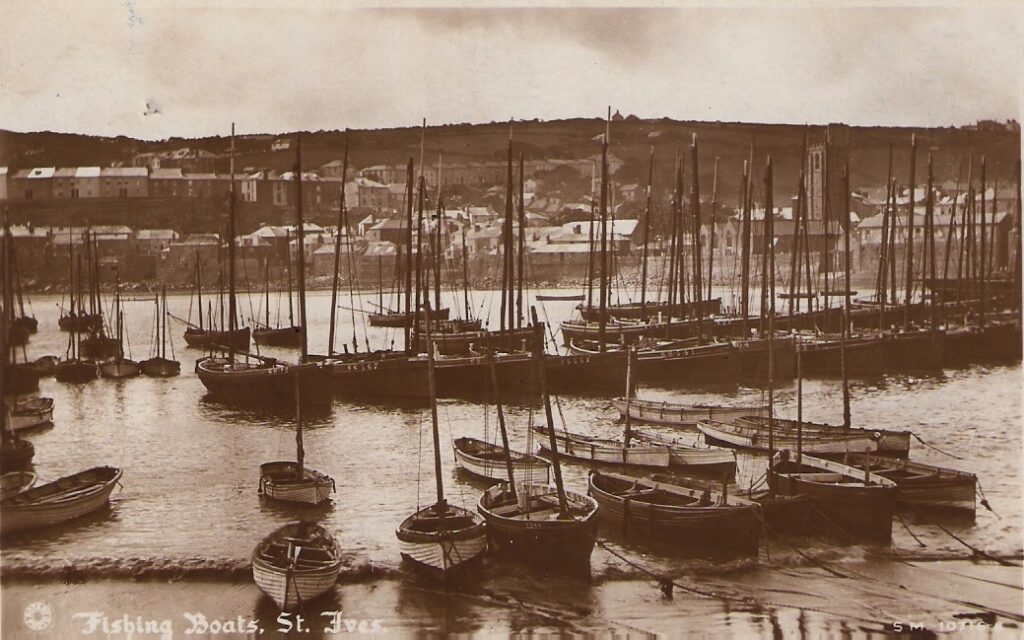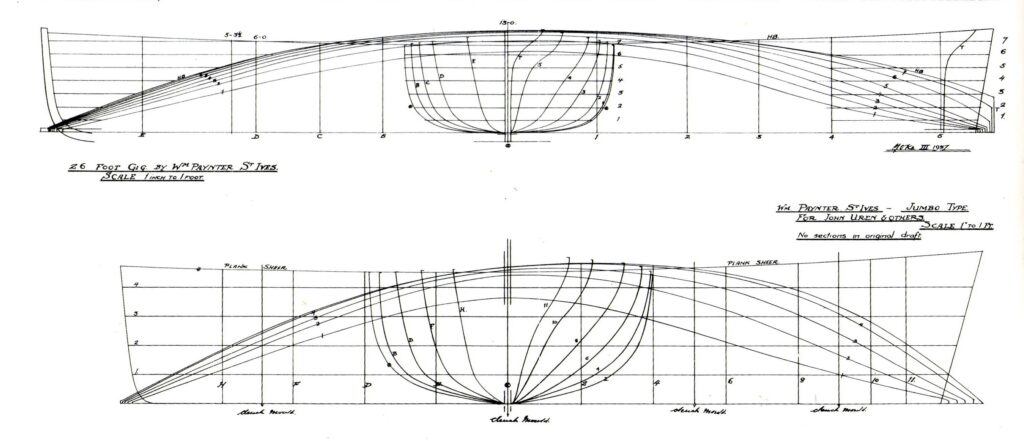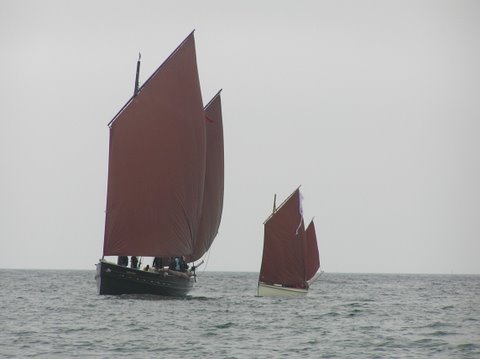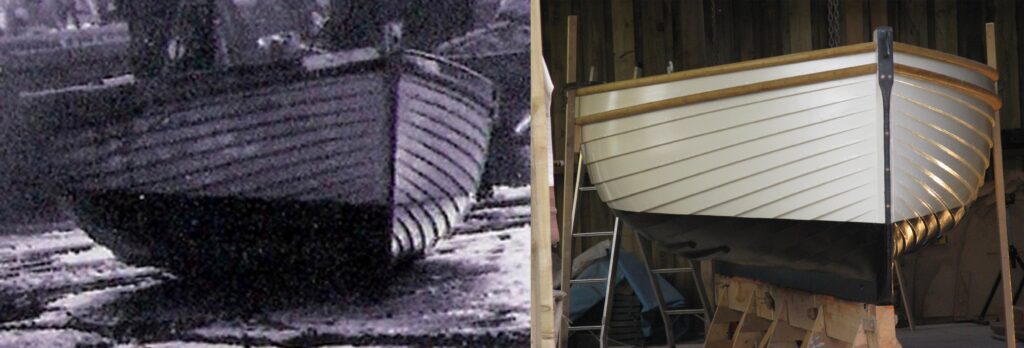History

Jumbos were a class of inshore fishing lugger quite unique to St.Ives. Until this project began, they were also the least known class of the fishery.
Jumbos were first registered in 1885, shortly before the demise of the fishery reflecting a growing preference for smaller inshore boats that could leave the harbour at half tide. They were a safe alternative to the pilot gigs (see below) which, built for speed, were better suited for fishing in fair weather. Jumbos were a ‘catch-all’ class to include anything larger than a pilot gig and smaller than a pilchard driver, so they varied widely in size and construction. Perhaps owing to their short life, Jumbos were soon forgotten following the demise of the fishery and working sail.
Today’s Jumbos however, were originally designed specifically for the purpose by one of St.Ives’ best known builders, William Paynter (1837–1930). They are replicas of the smallest recorded and were researched and built by Jonny Nance.

Unlike his contemporaries, Paynter recorded lines plans for his boats in a book of drafts which included lines for a ‘Jumbo Type for John Uren and others’ – the only known record of the jumbo’s shape. However, this particular book was thrown out when Paynter’s boatyard was being cleared following his death in 1930. And so the Jumbo vanished from history – or would have done had it not been for the vigilance of Jonny’s grandfather, R.Morton Nance, who happened to be passing and, recognising its’ importance, rescued it and had copies made (see above).

Why ‘Jumbo?’ To fishermen familiar with the much larger and more numerous mackerel boats, the new Jumbos would have seemed particularly small, perhaps even endearingly so, and therefore were ironically nicknamed after London Zoo’s famous African elephant- the biggest creature in captivity. In 1881, the sale of Jumbo the Elephant to Barnum and Bailey Circus in USA had caused a storm of protest.

Paynter’s lines gave the shape of the Jumbo but no construction details. These Jonny borrowed from the St.Ives punt which his father, Dicon, had recorded in great detail. Although much larger, the Jumbo would have been comparatively lightly built. The number of planks each side was decided by trial and error using strips of masking tape applied to the half-model to represent the tapering planks. The result was 14 – happily confirmed by a photo (above left) that Jonny received only after the first Jumbo was launched.
